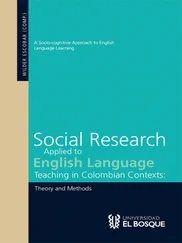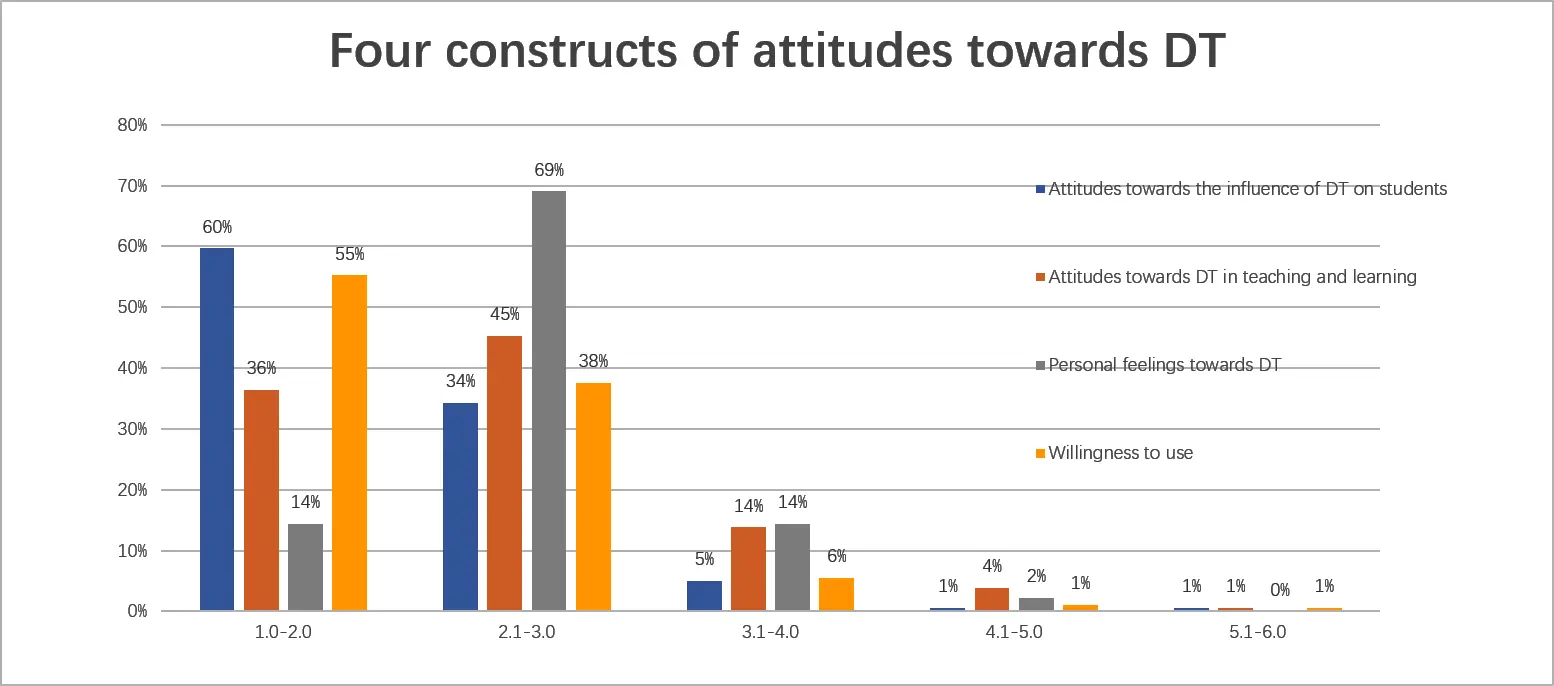 Figure 5:
Figure 5:
Frequency analysis of attitudes toward digital technologies
 Data analysis – Terminology
Data analysis – Terminology
Correlationis the degree of association between random variables. However, correlation is not the same as causation. Mathematically, a correlationRQ2: relationship between self-perceptions of digital competence and attitudes is expressed by a correlation coefficient that ranges from –1 (never occur together), through to 0 (absolutely independent) and to 1 (always occur together).
Regression analysisinvolves identifying the relationship between a dependent variable and one or more independent variables. The estimated regression equation can be used to predict the value of the dependent variable in view of the influence exerted by the value of the independent variables.
The independent variableis the one which is controlled in an experiment, but does not depent on other variables (e.g., age). The dependent variableis the one that changes in response to the independent variable. Their relationship could be simplified as cause and effect: the change in the independent variable will affect the dependent variable.
To identify the relationship between the two variables of student teachers’ self-perceptions of their digital competence and their attitudes toward DT, correlation analyses and regression analyses were conducted.
As is indicated in Table 3, the correlation coefficients (Pearson r) for the ten constructs are all above 0 (p<0.01), which concludes that student teachers’ perceived digital competence and their attitudes are positively related and the relationship is statistically significant. The relationships are found to be remarkably strong (>0.500) especially between “Attitudes toward the influence of DT on students” and “Facilitating learners’ digital competence” (0.530), between “Willingness to use” and “Facilitating learners’ digital competence” (0.567) as well as “Teaching and learning” (0.503), and between “Personal feelings toward DT” and “Digital resources” (0.559).
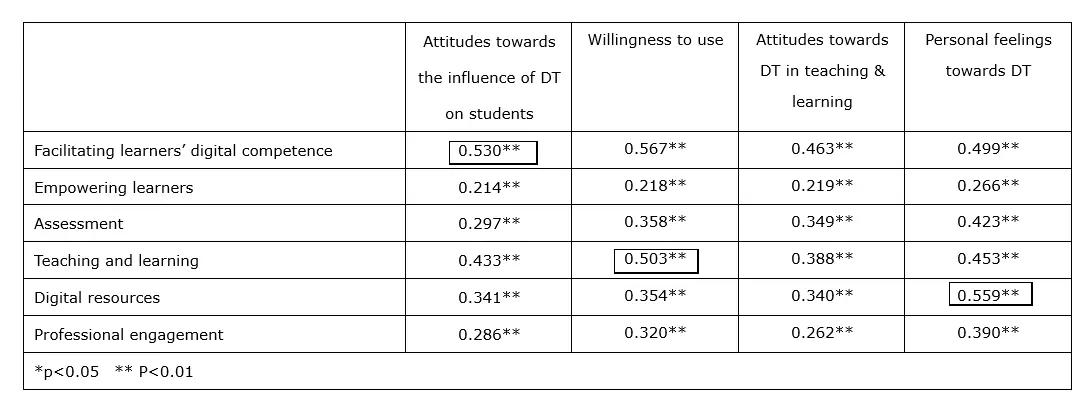 Table 3:
Table 3:
Correlation analysis on perceived digital competence and attitudes
In order to more accurately describe the relationship between the two variables, two regression analyses were carried out: one with the attitudes as the dependent variable and the digital competence as the independent variable, and another analysis with the two variables exchanged. According to Table 4, when the “self-perceptions of one’s digital competences” is the dependent variable, and the four constructs of digital attitudes are independent variables, the value of R² is 0.374, which means “attitudes toward DT” can account for 37.4% of the reasons for the change of “Self-perceptions of one’s digital competences”. The regression coefficients indicate that “Personal feelings toward DT” (t=5.649,p=0.000<0.01), “Willingness to use” 0.202 (t=2.145,p=0.033<0.05) will produce significant positive effects on “Self-perceptions of one’s digital competence” of student teachers.
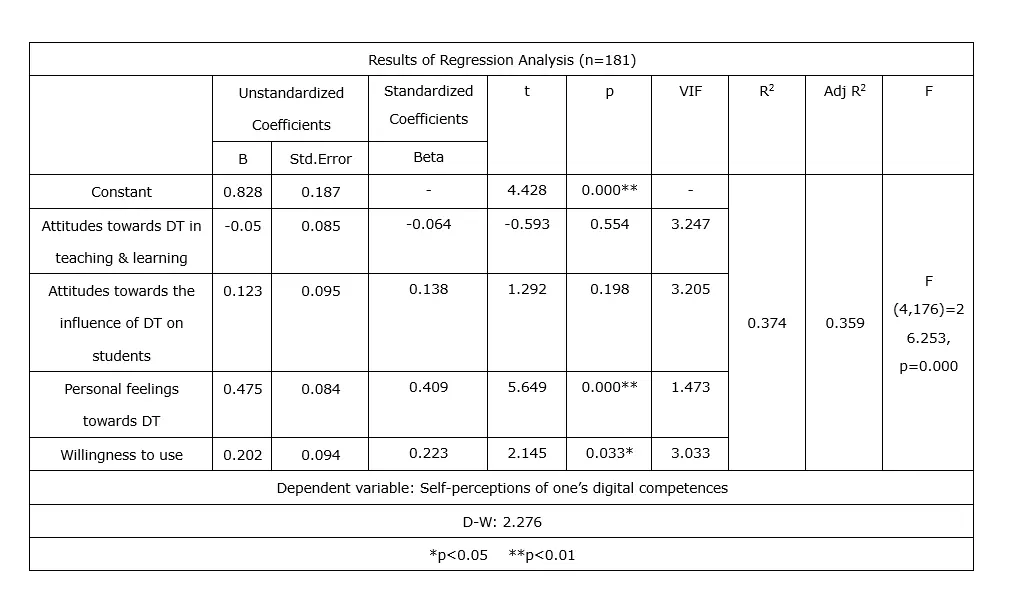 Table 4:
Table 4:
Regression analysis (Dependent variable: perceived digital competences)
Table 5 shows that perceived digital competences could predict 38.8% of the change in attitudes (R 2=0.388), which means the more competent the student teachers perceived themselves to be, the more positive attitudes they would hold. However, among the six constructs of digital competence, only “facilitating learner’s digital competence“ (t=4.786,p=0.000<0.01) will have a significant, positive effect on the attitudes.
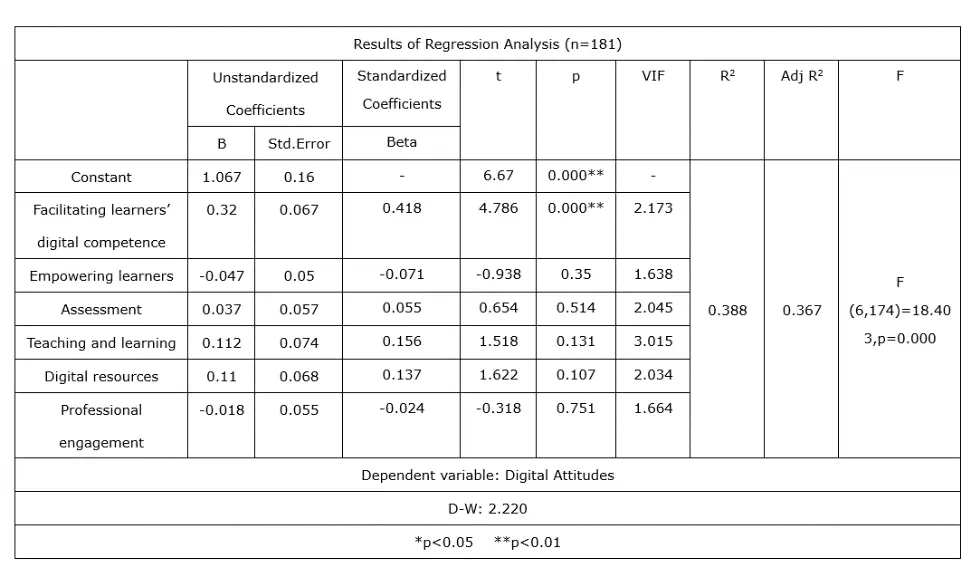 Table 5:
Table 5:
Regression analysis (X=attitudes towards DT as dependent variable, Y=six constructs of digital competence as independent variables). The result of regression analysis is an equation where the coefficients represent the relationship between each independent variable and the dependent variable.
To conclude, the correlation analysis and regression analysis show that student teachers’ self-perceptions of their digital competence were closely related to their attitudes toward DT and both variables affect each other positively. A positive coefficient in the regression analysis suggests that the mean of the dependent variable tends to increase with the increase of that of the independent variable. Perceived digital competence had a slightly stronger impact on attitudes (0.388) than attitudes had on digital competence (0.374).
RQ 3: influencing factorsIn order to find out whether factors such as age, gender, school types, and teaching experience may influence the attitudes and self-perceptions of student teachers toward DT, a one-way ANOVA analysis was used (with ANOVA standing for Analysis of Variance). This type of analysis is conducted to assess the interrelationship of two or more independent variables on a dependent variable. The one-way ANOVA analysis results are as follows:
Gender and years of pre-service teacher education may have an influence on student teachers’ perceived competence and their attitudes, but other factors like age, school types, and whether student teachers were Lehramt Staatsexamen or Master of English Studies students did not make any difference.
There was no statistically significant difference between gender and perceived digital competences on the whole, yet male students perceived themselves to be more digitally competent in facilitating learners’ digital competence (p=0.005), creating digital resources (p=0.025) and promote their professional engagement with digital technologies (p=0.014).
Student teachers with more years of pre-service teacher education had significantly less positive attitudes toward DT than students with no or less than one-year experience of pre-service teacher training (p=0.040).
3.5 Discussion of the Results
challenging teachers’ digital reluctanceOur findings show that student teachers had a very high degree of positive attitudes toward the role of digital technologies in English teaching and learning and its influence on students. These results seem to be inconsistent with the notion that teachers tend to be reluctant in using digital technologies in the classroom. A large majority of student teachers were in fact willing to use them in their (future) teaching and learning, even though only 14 % of the student teachers strongly or completely agree with the items under the construct “Personal feelings toward DT.” For instance, despite their concern about data privacy issues, student teachers are still willing to use digital technologies.
attitudes and competence: connectionsAdmittedly, having positive attitudes toward technology does not inevitably contribute to a change in behavior to integrate technology more in the classroom, or in a better way (Belland 2009). In other words, teachers may still choose not to use it in the classroom even if they have highly positive attitudes. Other variables may also influence teachers’ actual behavior, including their competence. Thus, it is not surprising that perceived digital competences of student teachers toward digital technologies were less positive than their attitudes. For example, over one-third of prospective teachers were not highly confident about their ability to create and modify digital resources. Moreover, half of the future teachers especially did not know how to facilitate learners with special needs. As Florian (2004: 18) argued, Information and Communication Technologies (ICT) offer both opportunities and challenges to learners with special needs. Technology can be used to reduce the effects of possible barriers to learning or participation for students with impairments, but student teachers, without any exposure to this issue, may feel overwhelmed by the challenges of making special adaptations for these learners to have access to technology. These concerns about their competence may pose a direct obstacle to transferring their upbeat attitudes into actions. Certainly, there is also a strong call for teacher education to showcase the didactic potentials of digital technologies as a basis for transferring competence into actual behavior.
Читать дальше
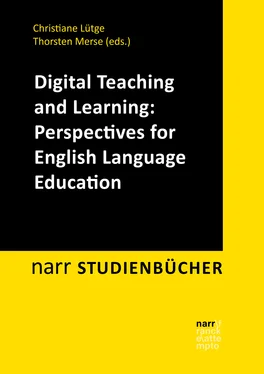
 Figure 5:
Figure 5: Data analysis – Terminology
Data analysis – Terminology Table 3:
Table 3: Table 4:
Table 4: Table 5:
Table 5:





